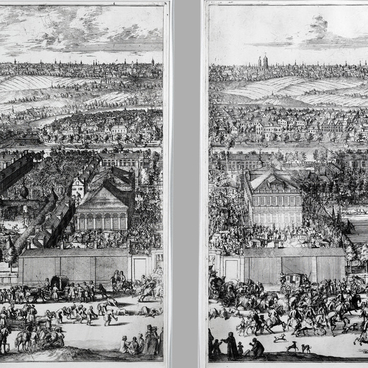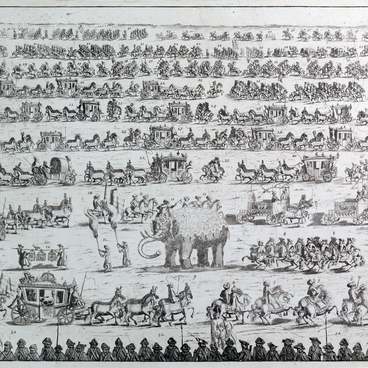The exhibition of the Irbit State Museum of Fine Arts includes the engraving “Portrait of Peter the Great” created by the Russian engraver Ivan Alekseyevich Sokolov based on the original drawing by Louis Caravaque.
Peter I is depicted wearing the uniform of the bombardier company of the Preobrazhensky Life Guards Regiment. The portrait by Louis Caravaque was initially kept in the Catherine Palace in Tsarskoe Selo. In 1773, Empress Catherine II presented the portrait to the sculptor Étienne Maurice Falconet so that he could use it for creating a monument to Peter I. When leaving for The Hague, Falconet took the portrait with him. After he died in Paris in 1791, the portrait was left to his daughter-in-law, Marie-Anne Collot, and then to her daughter, Baroness Jankowitz. According to the will of the latter, in 1866, the portrait was donated to the Gatchina Palace. In 1925, it was eventually transferred to the State Russian Museum.
Louis Caravaque (1684–1754) was a painter,
portraitist, decorator, and miniaturist. He represented the third generation of
French decorators who worked in Marseille and Toulon. Louis Caravaque was born
in Marseille into a family of a decorator from Gascony who specialized in
painting ships. Following in his father’s footsteps, Louis started working at
the Galleys Arsenal in Marseille. His brothers Jean-Baptiste and Joseph were
sculptors. In 1715, when Louis Caravaque was in Paris, his portraits caught the
attention of François Le Fort. As a result, Peter I invited him to work in
Russia, and Louis Caravaque signed a three-year contract. In 1716, he moved to
St. Petersburg. He portrayed Peter I and other members of the imperial family.
He also created paintings on commissions from the Russian Court, painted
plafonds, and supervised painting works in Peterhof and the Summer Palace in
St. Petersburg. Louis Caravaque also designed projects for court festivities. In
1718, he joined the Chancellery of Buildings where he taught Russian students.
Prior to that, he served in the St. Petersburg Governorate Chancellery. In
1722, he accompanied Peter I on a trip to Astrakhan where he painted the
emperor’s portrait. Caravaque lived on Vasilyevsky Island near the Menshikov
Palace, in his own house presented to him by Peter I in 1722. During the reign
of Anna Ioannovna, he was appointed the first court painter. He painted her
coronation portrait and took part in the decoration of the coronation
celebrations. Louis Caravaque continued serving as a court painter under both
Anna Leopoldovna and Elizaveta Petrovna. He created the official portrait of
Elizaveta Petrovna as the new empress and had the exclusive right to create
imperial portraits.


